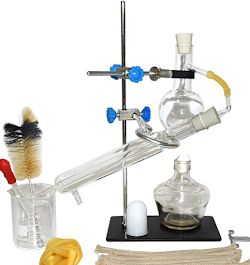Who was Ada Lovelace?
Ada Lovelace, born Augusta Ada Byron in 1815, was an English mathematician and writer, known for her work on Charles Babbage's proposed Analytical Engine, an early mechanical general-purpose computer. She is often considered the world's first computer programmer.
She was the only legitimate child of the poet Lord Byron and his wife, Anne Isabella Milbanke. Her parents separated shortly after her birth, and her father had little involvement in her upbringing. However, her mother was determined to provide her with a rigorous education in mathematics and science, hoping to counter any poetic or imaginative tendencies inherited from Lord Byron.
Ada Lovelace's intellectual abilities flourished. From a young age, she displayed a natural talent and curiosity for various subjects, including mathematics and logic. developed a keen interest in mathematics and logic. As Lovelace pursued her education, her interest in mathematics and logic grew. She dedicated herself to studying these disciplines in depth, exploring their theories, principles, and applications. Lovelace's keen interest implies a deep fascination and enthusiasm for the subjects, driving her to delve further into their complexities and push the boundaries of her knowledge. Her passion was not merely superficial. Lovelace demonstrated a genuine love for these fields, eagerly seeking opportunities to engage with complex mathematical problems and abstract reasoning. She engaged in rigorous self-study, seeking out the guidance of mentors and tutors to expand her understanding and challenge herself intellectually. Moreover, Lovelace's keen interest in mathematics and logic extended beyond personal curiosity. She recognized the practical implications and potential of these disciplines, especially in relation to the emerging field of computing. Her ability to grasp the abstract concepts of mathematics and apply logical reasoning to problem-solving allowed her to make groundbreaking contributions to the development of early computing devices.
Her collaboration with Charles Babbage began in the 1830s when she was introduced to his ideas for the Analytical Engine. Lovelace recognized the potential of the machine and expanded upon Babbage's designs, creating an algorithm for its operation. This algorithm, intended for calculating Bernoulli numbers, is often regarded as the first computer program ever created.
Ada Lovelace's work on the Analytical Engine went beyond mere mathematical calculations. She speculated about the machine's potential for more than just number-crunching and envisioned that it could manipulate symbols and represent any kind of information, even music and art. Her insights and foresight into the capabilities of computing devices far surpassed the understanding of her contemporaries.
Unfortunately, Lovelace's contributions to the field of computing were largely overlooked during her lifetime. Her work on the Analytical Engine was published in an English translation of an Italian article in 1843, but it didn't gain significant recognition at the time. It wasn't until the mid-20th century, with the emergence of modern computers, that Lovelace's notes and ideas were rediscovered and appreciated for their visionary nature.
Today, Ada Lovelace is celebrated as a pioneer in computer science and a symbol of women's contributions to the field. Her analytical thinking, creativity, and passion for mathematics continue to inspire generations of scientists and engineers. The second Tuesday of October is recognized as Ada Lovelace Day, an international celebration of the achievements of women in science, technology, engineering, and mathematics (STEM).




Comments
Post a Comment